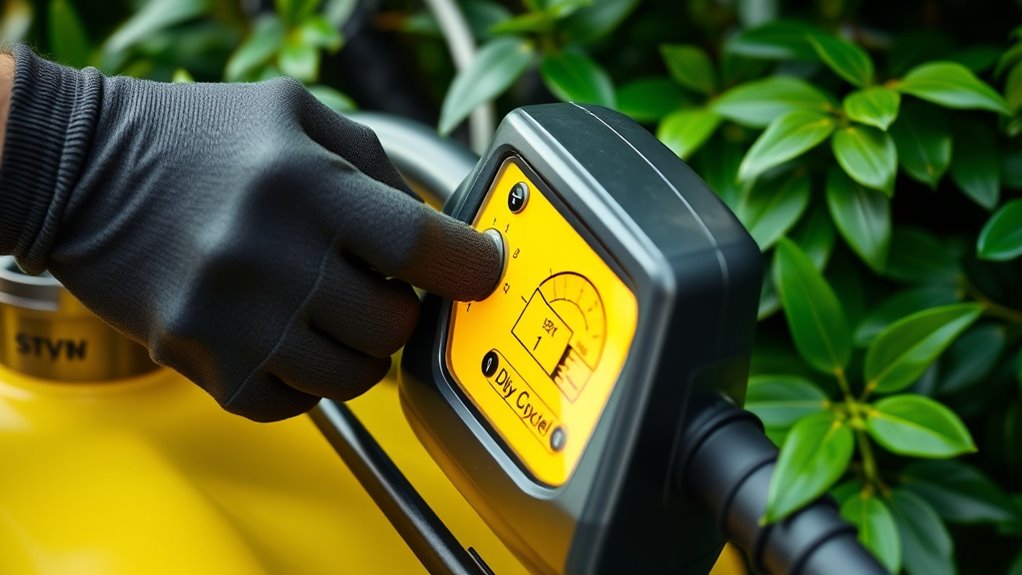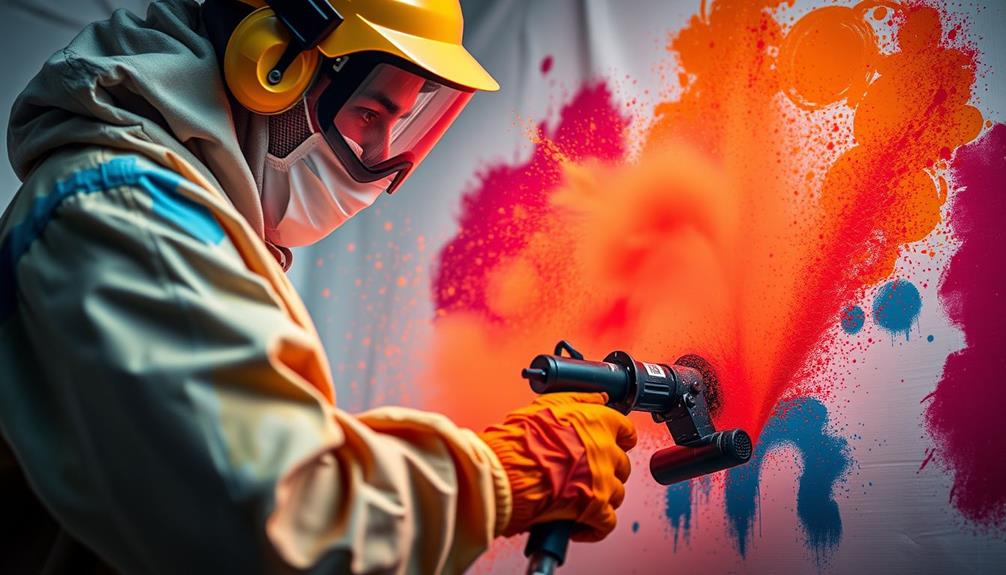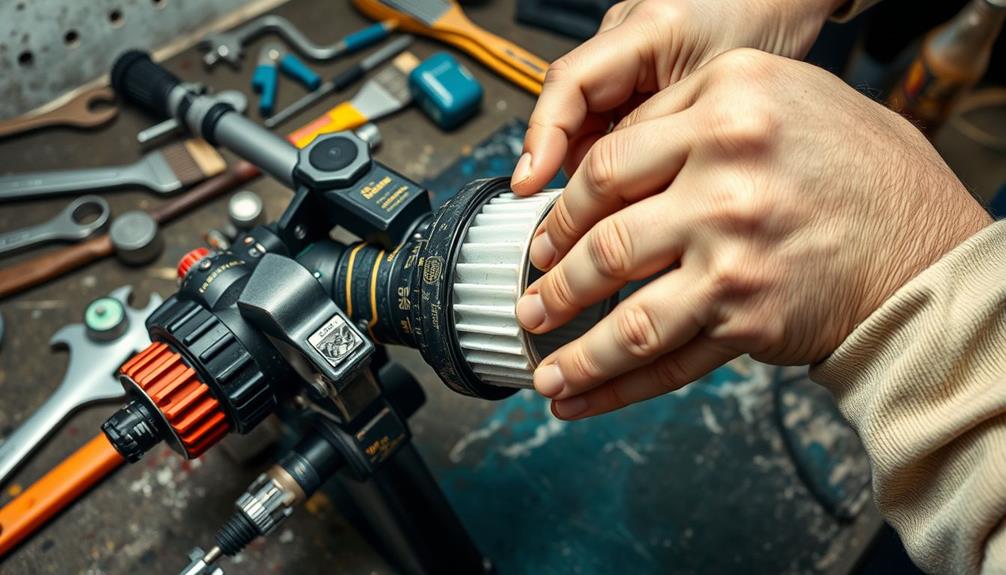To determine if your sprayer can survive the job, you need to understand its duty cycle, which shows how long it can run before overheating. If the work exceeds this limit, your sprayer risks damage or failure due to heat buildup. By matching your workload with the right duty cycle, you prevent overuse and extend its lifespan. Keep exploring to discover how to optimize your sprayer’s performance and avoid costly mistakes.
Key Takeaways
- Know your sprayer’s duty cycle percentage to determine safe operation durations and prevent overheating.
- Exceeding the recommended duty cycle can cause motor damage and reduce equipment lifespan.
- Schedule work with planned breaks to allow the sprayer to cool down and stay within its duty cycle.
- Match sprayer capacity and duty cycle ratings to the size and frequency of your job.
- Follow manufacturer guidelines to ensure the sprayer survives the job without overheating or failure.

Have you ever wondered how electronic devices manage power and performance? It’s a question that becomes especially relevant when you’re dealing with tools like sprayers, where efficiency and durability matter. One key concept to understand is the duty cycle—a measure that tells you how long a device can run before it needs a break. Essentially, duty cycle indicates the balance between operation time and rest time, helping you prevent overheating and damage. Recognizing a sprayer’s duty cycle can make the difference between completing your job smoothly and facing equipment failure mid-task.
Most sprayers, especially those powered by electric motors or compressors, are designed with specific duty cycles in mind. For example, a sprayer with a 50% duty cycle at a certain flow rate can operate continuously for half the time within a 10-minute period before needing to cool down. If you push beyond that, you risk overheating the motor or damaging internal components. This is because every motor generates heat as it works, and if it’s forced to run longer than its design allows, that heat can build up faster than it dissipates. Over time, this can lead to premature wear, reduced efficiency, or outright failure.
Most electric sprayers have specific duty cycles to prevent overheating and damage.
Knowing the duty cycle helps you plan your work more effectively. If you’re tackling a big job, you can break it into manageable segments, giving the equipment time to cool down during breaks. For instance, if your sprayer has a 30-minute duty cycle, you might run it for 15 minutes, then turn it off for a similar amount of time. This approach ensures the device stays within its safe operational limits, prolonging its lifespan. It’s also wise to keep an eye on the manufacturer’s specifications—these are designed to match the device’s capabilities and help you avoid costly repairs.
Additionally, understanding duty cycle can impact your choice of equipment. If you frequently handle large projects, opting for a sprayer with a higher duty cycle or one that’s rated for continuous operation can save you time and hassle. Conversely, for lighter jobs, a lower-duty-cycle model might suffice, offering a lighter, often more affordable option. By matching your equipment’s duty cycle with your workload, you ensure excellent performance and longevity. Being aware of the heat dissipation capabilities of your sprayer can further help prevent overheating and extend equipment life.
Frequently Asked Questions
How Does Duty Cycle Vary Between Different Sprayer Models?
Different sprayer models have varying duty cycles based on their design and intended use. Some models can operate continuously for longer periods, often around 50-60%, while others have shorter duty cycles, like 20-30%, requiring rest breaks. Always check the manufacturer’s specifications to understand each model’s duty cycle. Choosing a sprayer with an appropriate duty cycle guarantees you don’t overload it, helping it last longer and perform reliably during your jobs.
Can I Extend My Sprayer’s Duty Cycle With Additional Batteries?
Yes, you can extend your sprayer’s duty cycle with extra batteries. In fact, adding a second battery can boost runtime by up to 50%, allowing you to work longer without interruption. Just make sure your sprayer’s design supports dual batteries safely. Keep in mind, switching batteries quickly can minimize downtime, so choose batteries with similar capacity and voltage for maximum performance.
What Are Signs My Sprayer Is Overheating Due to Duty Cycle Limits?
You’ll notice your sprayer overheating if it feels excessively hot to touch, shuts off unexpectedly, or produces a burning smell. You might also see warning lights or error messages on the display. Pulsating or inconsistent spray patterns can also signal overheating. To prevent damage, stop and let your sprayer cool down. Monitoring temperature gauges and adhering to duty cycle limits helps avoid overheating and prolongs your equipment’s lifespan.
How Does Ambient Temperature Affect Duty Cycle Performance?
Ambient temperature substantially impacts your sprayer’s duty cycle performance. When temperatures are high, your equipment overheats faster because it can’t cool down efficiently, reducing your spraying time before needing a break. Conversely, cooler temperatures help keep your sprayer running longer without overheating. To maintain ideal performance, avoid spraying in extreme heat and give your equipment regular breaks, especially during hot days, to prevent overheating and extend its lifespan.
Are There Maintenance Tips to Maximize My Sprayer’s Duty Cycle?
Maintaining your sprayer maximizes its mighty duty cycle. Regularly clean clogs and check hoses to prevent blockages. Lubricate moving parts for smooth operation and inspect seals to stop leaks. Store it properly when not in use, avoiding extreme temperatures. Follow the manufacturer’s maintenance manual meticulously. These simple steps strengthen your sprayer’s stamina, ensuring it sustains longer, performs better, and keeps you spraying smoothly through every job.
Conclusion
To keep your sprayer running smoothly, understanding its duty cycle is essential. For example, if you push a sprayer to its limit during back-to-back jobs without breaks, you risk overheating and damage. Imagine you’re spraying a large field; scheduling breaks guarantees the motor cools down, prolonging its life. By respecting the duty cycle, you’ll avoid costly repairs and keep your equipment working efficiently for years to come.









